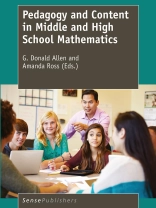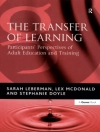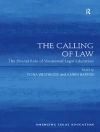The book provides an accumulation of articles, included in Focus on Mathematics Pedagogy and Content, a newsletter for teachers, published by Texas A&M University. Each article presents a discussion of a middle or high school mathematics topic. Many of the articles are written by professors at Texas A&M University. The book is broken into three parts, with the first part focusing on content and pedagogy, related to the NCTM content strands of Number, Algebra, Geometry, Measurement, and Statistics and Probability. Articles include an in-depth presentation of mathematical content, as well as suggested instructional strategies. Thus, the integration of content knowledge and pedagogical knowledge is emphasized. The second and third parts apply to assessments, mathematical games, teaching tips, and technological applications. While other pedagogical reference books may provide an in-depth look at how to teach a topic, this book includes articles that also explain a topic, in great length. Thus, teachers may develop content knowledge first and then re-read each article, in order to learn appropriate instructional strategies to use. Many articles include technological applications, which are interspersed throughout the book. In addition, a special section, which includes helpful information, available tools, training sessions, and other references, for using technology in mathematics, is also presented.
قائمة المحتويات
Preface; Part I: Content and Pedagogy; Section 1: Number; A Brief History of Zero; Approximating PI; The Caesar Cypher; How Big Is Infinity?; Making Complex Arithmetic Real!; Early PI; Primes, Perfect Numbers and Magic Numbers (Just for Fun); How Do We Define the Number “1?”; Percentage Problems; Microwave Math; Fantasy Problems and Flying Carpet Solutions; Section 2: Algebra; The Mystery of the New “Planet” (Or How Regression Saved the Day); Geogebra in the Classroom; Working Together: The Math Part; A Brief Look at Circles; Optimization – With and without Calculus; Pythagorean Triples Plus One; A Brief Look at Derivatives; A Brief Look at Arithmetic and Geometric Sequences; A Brief Look at Sigma Notation; Communicating with Life in the Universe; Section 3: Geometry and Measurement; The Mathematical Mystery of the Pyramid; The Sphere Packing Problem; Big, But Not Really Big Numbers; The Net of a Cone; Area of a Circle; Geometry Meets Algebra – Super-Conic Constructions, Part I; Geometry Meets Algebra – Super-Conic Constructions, Part II; Section 4: Statistics and Probability; Let’s Make War—Just for Fun; A Brief Look at Probability; Area Under the Normal Curve; Finding the Area Under the Normal Curve Using the Graphing Calculator; Hypothesis Testing; A Brief Look at Expected Value; Part II: Assessment; Section 5: Classroom Formative and Summative Assessments; The Evil Twins – Testing and Stress; Unfairness in Testing – Mathematics and Simulations; Online Assessments in Math; When It Comes to Math, What Exactly Are We Testing for?; Section 6: Low-Stakes and High-Stakes Testing; Assessment Via High-Stakes Testing; High-Stakes Testing: Test Construction; Low-Stakes Tests and Labels; Part III: Technology, Games, and Tips; Section 7: Technological Applications; What Technology Works for Teaching Mathematics and Why – A Perspective, Part I; Using Technology in Teaching Math; What Technology Works for Teaching Mathematics and Why – A Perspective, Part II; The Graphing Calculator: A Brief Look at What It Can Do; Section 8: Mathematical Games or “Recreational Genre Problems”; Problems in Mathematical Recreation; A Mile of Pennies; Easy Problems; Mathematical Games and Learning; Section 9: Teaching Tips and Resources; Two Great Software Tools (Winplot and Mathtrax); Using Polya’s Problem Solving Process in the Mathematics Classroom to Prepare for TAKS; Problem-Solving Strategies – A Quick Checklist; What Is Mental Math?; A Digital Simulation for Prospective Teachers to Teach Algebra Concepts for Equity; Teaching Is a Balancing Act; TAMU’s Peer Program Promotes STEM the World Over; Energy Math Lessons for Math Classes; Multiple Representations, I; Multiple Representations, II; Multiple Representations, III; Multiple Representations, IV; The Two-Minute Lesson.












